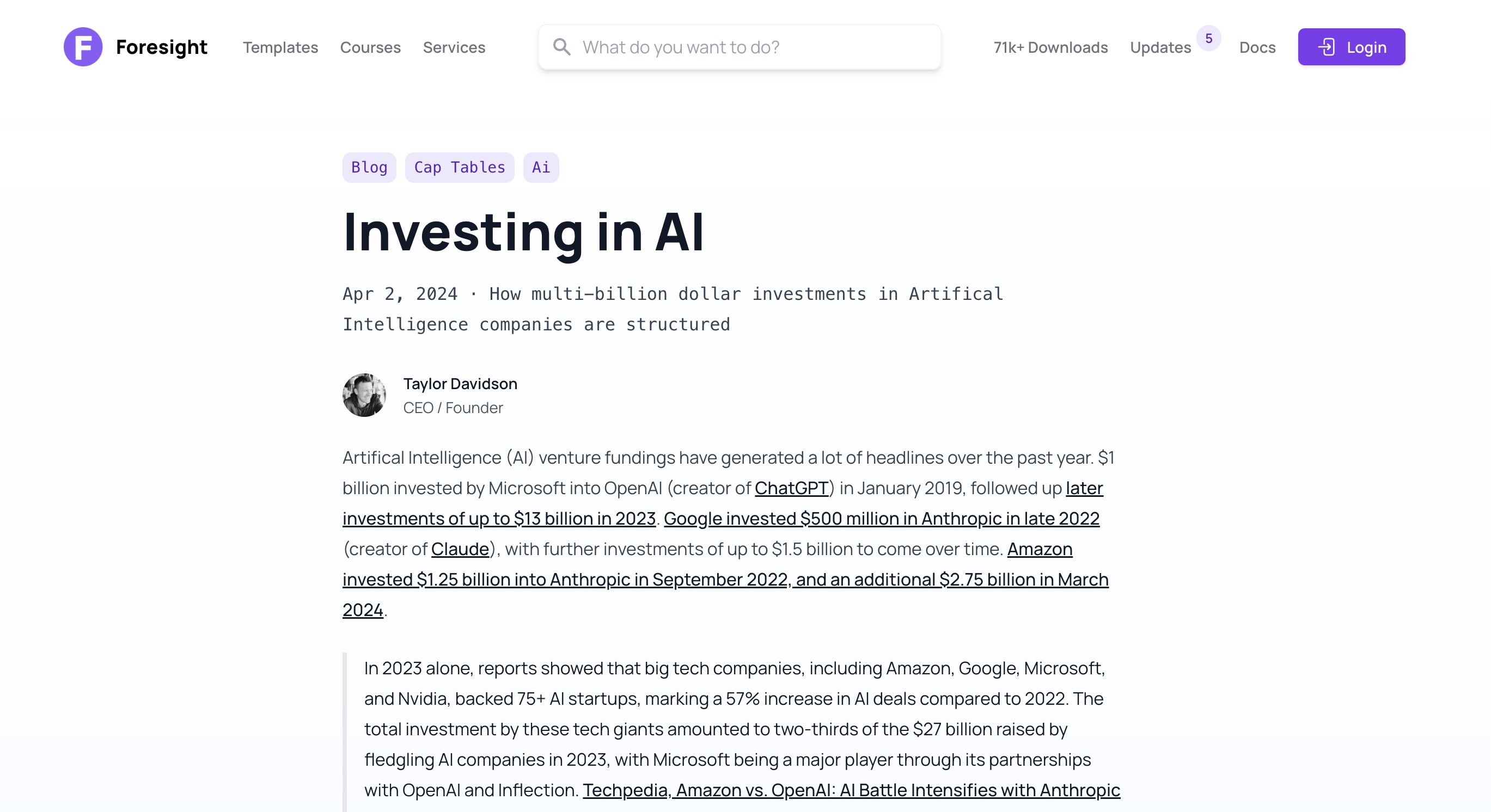Artifical Intelligence (AI) venture fundings have generated a lot of headlines over the past year. $1 billion invested by Microsoft into OpenAI (creator of ChatGPT) in January 2019, followed up later investments of up to $13 billion in 2023. Google invested $500 million in Anthropic in late 2022 (creator of Claude), with further investments of up to $1.5 billion to come over time. Amazon invested $1.25 billion into Anthropic in September 2022, and an additional $2.75 billion in March 2024.
In 2023 alone, reports showed that big tech companies, including Amazon, Google, Microsoft, and Nvidia, backed 75+ AI startups, marking a 57% increase in AI deals compared to 2022. The total investment by these tech giants amounted to two-thirds of the $27 billion raised by fledgling AI companies in 2023, with Microsoft being a major player through its partnerships with OpenAI and Inflection. Techpedia, Amazon vs. OpenAI: AI Battle Intensifies with Anthropic Investment
The money gets the headlines, but what's actually interesting is the why and the how behind these investments.
Balance sheet business development
More than just an investment, these are business development deals to protect valuable business units:
The likes of Anthropic and OpenAI require an immense amount of computing power to train their models and the cloud giants can help. These ‘strategic collaborations’ include contingencies that require the company to leverage the investor's cloud services instead of shopping around to other providers for the best product, price and service.
The cloud providers are investing capital into a business, partnering in their future success, implementing the tooling across their suite of offerings, and are doing so by essentially taking cash out of their left pocket and placing it into their right pocket. Or in financial terms: using their balance sheet to drive the income statement.
The outflow of cash in dollars may seem large, but those dollars, thanks to their strategic partnership, will eventually flow back into the business via cloud consumption. The merits of these revenues can be debated given it's cashless revenue, but if the large language models are successful, the low quality revenues today should eventually turn into high quality revenues down the road. Titan, The Weekly
These deals are all announced not only as investments, but partnerships to work together on developing AI computing systems, with the AI companies announcing the cloud companies as their "preferred cloud provider" and the cloud companies announcing the intent to offer AI models and tools for developers to build into their own applications. And given the amount of capital needed to pay for the cloud services necessary to develop, deploy, and continually refine the LLM models used for AI services, deals like these are necessary to fund operating expenses, as few venture capital funds are large enough to consider writing these kind of check sizes out of their funds. AI companies (I would believe) get to pay less than rack rate through these partnerships, fund their growth at a lower cost of capital than venture capital, and the cloud companies get access to valuable technology for them and their cloud customers to build AI into their product suites (e.g. Microsoft Copilot and Amazon Bedrock, respectively).
Cash, credits, and convertibles
The billion dollar headlines also miss an important point: unlike investments from a venture capital or investment firm, these are not simple investments of dollars but highly structured deals that (seem to) involve a mixture of investment dollars for equity, cloud services credits valued as investment dollars, convertible notes, and revenue sharing. Here's a few examples of deal structures that have been rumoured:
Microsoft’s infusion would be part of a complicated deal in which the company would get 75% of OpenAI’s profits until it recoups its investment, the people said. (It’s not clear whether money that OpenAI spends on Microsoft’s cloud-computing arm would count toward evening its account.)
After that threshold is reached, it would revert to a structure that reflects ownership of OpenAI, with Microsoft having a 49% stake, other investors taking another 49% and OpenAI’s nonprofit parent getting 2%. There’s also a profit cap that varies for each set of investors — unusual for venture deals, which investors hope might return 20 or 30 times their money. Semafor, Microsoft eyes $10 billion bet on ChatGPT
Google's investments have been more straightforward, with reports that their $500 million Anthropic investment was in a convertible note that converted in a later equity investment round led by Menlo Ventures (interestingly, done through an SPV rather than direct fund investments).
Amazon’s investment, disclosed in a quarterly filing, included a $1.25 billion deployed in September in the form of a convertible note that converts in this round. Amazon also “has an agreement,” the company wrote, to invest up to $2.75 billion in a second note that would expire in Q1, 2024. Forbes, Inside AI unicorn Anthropic’s unusual US$750 million fundraise
Many reports have noted that the publicly-announced investment amounts include a mixture of cash and credits for cloud services, which would point to the need for investment structures flexible enough to handle variable investment amounts. Convertible notes provide some additional return to investors in the form of interest rates; interest rates on notes have doubled from 5% in 2019 to just under 10% in late 2023, and combined with the average 20% discount rate, can be a flexible way to structure an investment with a business partner before they convert through an external investor-led equity investment round.
The rwave of investments and partnerships in the AI industry points to a pragmatic approach towards funding innovation. While the headlines focus on the massive amounts of money being invested, the real story is perhaps more grounded. Shared goals, shared technology, shared data, and hopefully ground-breaking improvements in AI.

